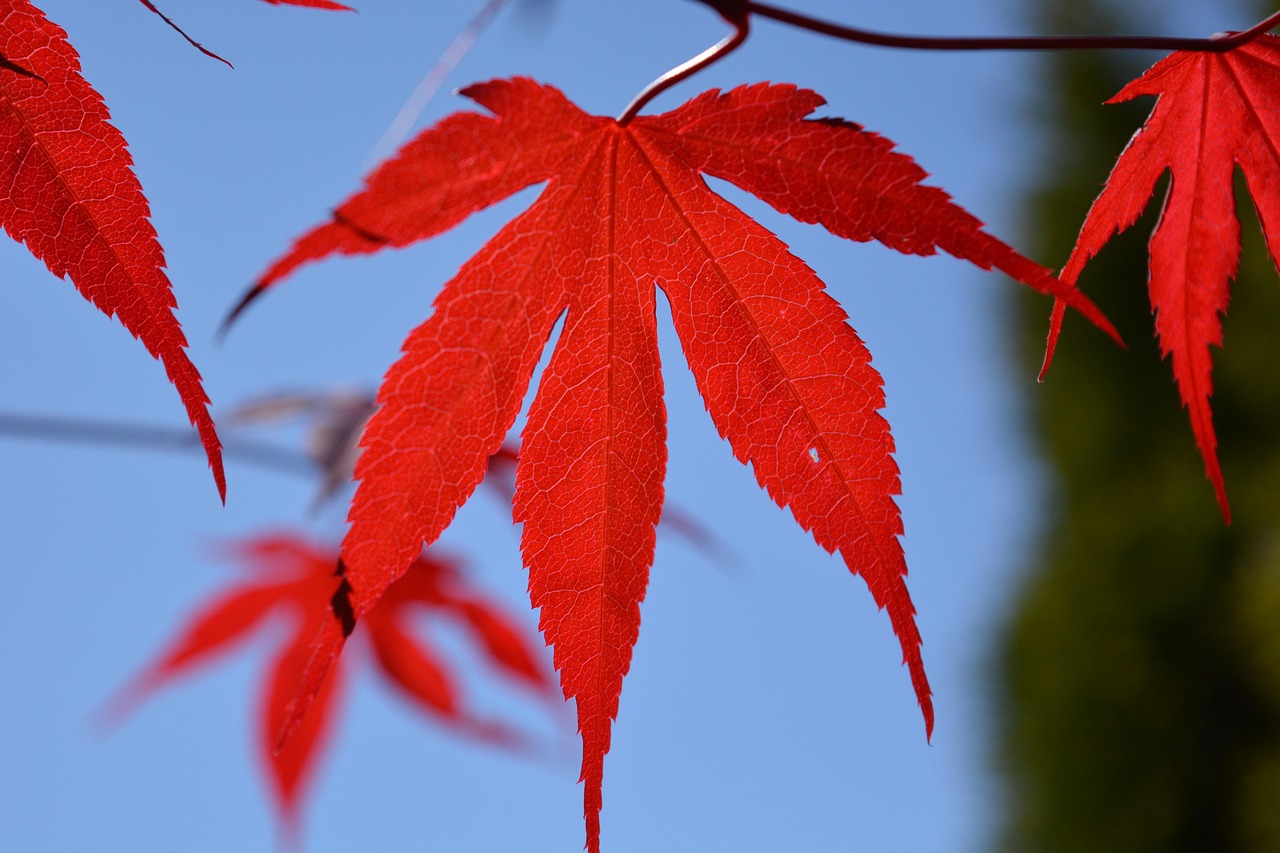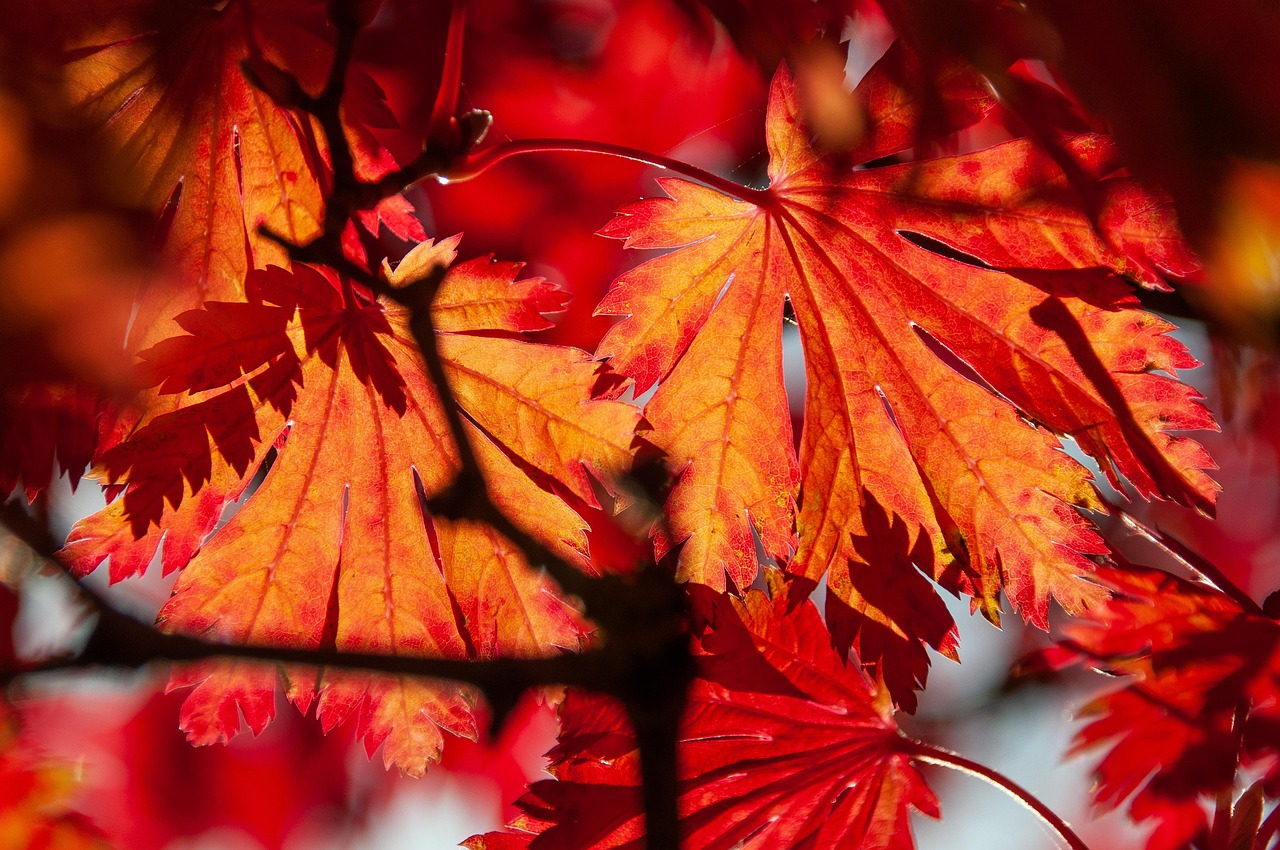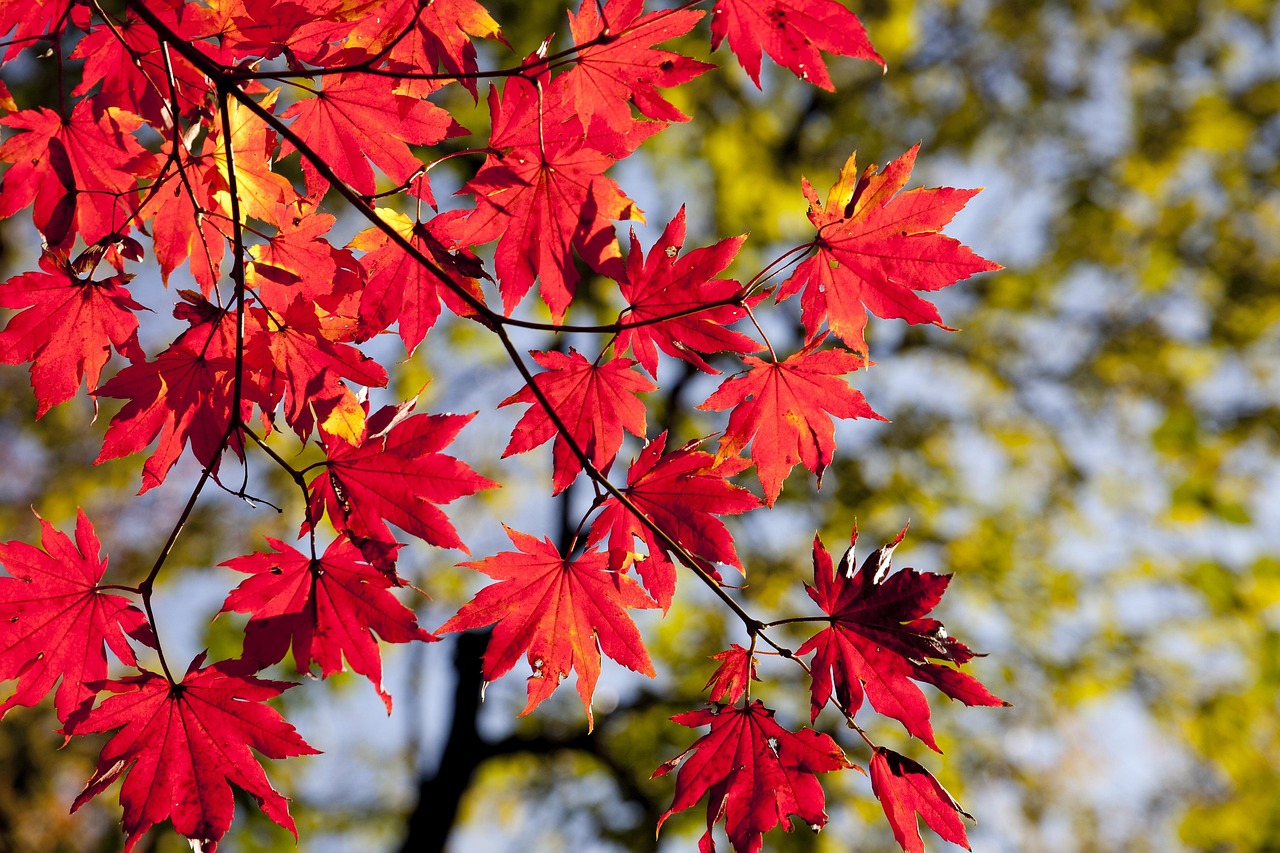The Red Maple tree (Acer rubrum) has a moderate growth rate, typically ranging from 1 to 2 feet per year. It is generally resistant to many diseases, but it can be affected by issues like leaf spot, tar spot, and root rot under certain conditions.
The Red Maple tree is one of the most popular trees in North America. Known for its vibrant fall foliage and adaptability, it thrives in a variety of environments. The tree is commonly found in wetlands, forests, and urban areas. Its fast growth and attractive appearance make it a favorite among landscapers and homeowners alike.

Understanding the growth rate and disease resistance of the Red Maple tree is crucial for anyone looking to plant or maintain this species. Growth rates can vary based on factors such as soil quality, climate, and care practices. Disease resistance is equally important as it affects the overall health and longevity of the tree.
Growth Rate of the Red Maple Tree
The growth rate of a Red Maple tree can be influenced by several factors. On average, these trees grow between 1 to 2 feet per year. In optimal conditions, some specimens may even exceed this range. This relatively fast growth makes the Red Maple an appealing choice for those looking to establish shade quickly.
Several factors play a role in determining the growth rate:

- Soil Quality: Well-draining, rich soil promotes healthy growth.
- Climate: Red Maples prefer temperate climates with adequate rainfall.
- Sunlight: Full sun to partial shade supports optimal growth.
- Watering: Regular watering during dry spells encourages faster growth.
The growth rate can also be affected by the tree’s age. Young trees tend to grow faster than older ones. Additionally, pruning and proper maintenance can enhance growth by encouraging new shoots and removing competing branches.
Disease Resistance of the Red Maple Tree
The Red Maple tree is generally known for its resilience against many common diseases. However, it is not entirely free from health issues. Some of the diseases that may affect Red Maples include:
- Leaf Spot: Caused by fungal infections, this disease leads to unsightly spots on leaves.
- Tar Spot: Another fungal condition that causes black spots on foliage, affecting aesthetics.
- Root Rot: This occurs in poorly drained soils and can be fatal if not addressed.
While these diseases can pose challenges, proper care can significantly reduce their impact. For instance, ensuring adequate drainage can help prevent root rot. Additionally, regular inspections can help identify issues early before they become severe.

Key Facts About Red Maple Trees
| Characteristic | Description |
|---|---|
| Scientific Name | Acer rubrum |
| Average Height | 40 to 60 feet |
| Average Spread | 30 to 50 feet |
| Growth Rate | 1 to 2 feet per year |
| Foliage Color in Fall | Brilliant red, orange, or yellow |
| Soil Preference | Moist, well-drained soils |
| Sunlight Requirement | Full sun to part shade |
The Red Maple’s adaptability extends beyond its physical characteristics. It can thrive in various soil types, making it suitable for different planting locations. This adaptability contributes to its popularity among homeowners and urban planners alike.
Caring for a Red Maple tree involves monitoring for signs of disease and ensuring optimal growing conditions. Regular maintenance can help ensure that these beautiful trees flourish for generations.
In summary, understanding the growth rate and disease resistance of the Red Maple tree is essential for successful cultivation. By providing adequate care and attention, you can enjoy the beauty and benefits that these trees offer.
Optimal Conditions for Growth
To maximize the growth rate of the Red Maple tree, it is essential to create optimal growing conditions. Several environmental factors contribute to the health and rapid growth of this species. Understanding these factors can help ensure that your Red Maple thrives.

Soil Composition
The type of soil plays a significant role in the growth of Red Maple trees. These trees prefer:
- Well-drained Soil: Red Maples thrive in soils that do not retain excess water. Poor drainage can lead to root rot.
- Rich Organic Matter: Adding organic compost improves soil fertility, providing necessary nutrients.
- pH Levels: The ideal soil pH for Red Maples is between 5.5 and 7.0, slightly acidic to neutral.
Before planting, it is advisable to conduct a soil test. This helps in determining the current pH and nutrient levels. Based on the results, amendments can be made to create an ideal environment for growth.
Watering Practices
Watering is crucial for young Red Maple trees, especially during their initial growth phase. The following practices can help ensure adequate hydration:
- Consistent Moisture: Young trees should be watered regularly to keep the soil consistently moist but not soggy.
- Deep Watering: Water deeply but infrequently to encourage root development. This method promotes deeper root systems.
- Mulching: Applying a layer of mulch around the base helps retain moisture and regulate soil temperature.
Pest Management
Along with diseases, pests can pose a threat to the health of Red Maple trees. Effective pest management strategies can help protect these trees from damage.
Common Pests
Several pests may affect Red Maples, including:
- Aphids: These small insects can weaken the tree by sucking sap. They may also attract other pests and lead to sooty mold.
- Scale Insects: Scale insects attach themselves to branches and leaves, feeding on sap and causing leaf drop.
- Spider Mites: These tiny pests thrive in dry conditions and can cause leaf discoloration and drop.
Pest Control Methods
Implementing pest control measures is essential for maintaining tree health. Effective methods include:
- Regular Inspections: Check the tree regularly for signs of pests or damage.
- Natural Predators: Encourage beneficial insects such as ladybugs that feed on aphids and other harmful pests.
- Insecticidal Soap: Using insecticidal soap can effectively manage soft-bodied insects like aphids and spider mites.
Nutrient Requirements
Nutrients are vital for the overall growth and health of Red Maple trees. Providing the right balance of nutrients supports robust growth and disease resistance.
Essential Nutrients
The primary nutrients required by Red Maples include:
- Nitrogen (N): Promotes healthy leaf growth and overall vigor.
- Phosphorus (P): Supports root development and flowering.
- Potassium (K): Enhances disease resistance and helps in water regulation.
Nutrient Application
The best approach to nutrient application involves:
- Fertilizing in Spring: Applying a balanced fertilizer in early spring supports new growth.
- Avoiding Over-fertilization: Too much fertilizer can lead to excessive foliage growth at the expense of root development.
- Organic Amendments: Consider using organic fertilizers or compost to gradually improve soil health and nutrient availability.
Pruning Techniques
Proper pruning is essential for maintaining the structure and health of Red Maple trees. It encourages new growth, improves air circulation, and enhances overall aesthetics.
When to Prune
The best time to prune Red Maples is during late winter or early spring before new growth begins. This timing minimizes stress on the tree and promotes healthy recovery.
Pruning Methods
Effective pruning techniques include:
- Removing Dead or Diseased Branches: This helps prevent the spread of disease and encourages healthy growth.
- Crown Thinning: Selectively removing branches can improve air circulation and light penetration.
- Avoiding Topping: Topping can lead to weak growth and make trees more susceptible to disease.
Caring for your Red Maple tree with attention to its specific needs will ensure a healthy, vibrant tree capable of thriving for years to come.
Common Diseases Affecting Red Maple Trees
Despite their general resilience, Red Maple trees can be susceptible to a variety of diseases. Being aware of these conditions is crucial for effective management and protection of the trees. Understanding the symptoms and treatments for these diseases can help maintain tree health.
Fungal Diseases
Fungal infections are among the most common concerns for Red Maples. The following are notable fungal diseases:
- Leaf Spot: This disease is characterized by brown or black spots on the leaves. It typically occurs during warm, wet weather. While it may not be fatal, it can affect the tree’s appearance and overall vigor.
- Tar Spot: This condition results in dark, tar-like spots on the leaves. Although it does not usually harm the tree significantly, it can lead to defoliation if severe.
- Powdery Mildew: This fungal disease manifests as a white, powdery coating on leaves and stems. It thrives in warm, dry conditions and can weaken the tree if not controlled.
Bacterial Diseases
Bacterial infections can also affect Red Maple trees, leading to various symptoms:
- Bacterial Leaf Scorch: This condition causes leaf margins to turn brown and may lead to early leaf drop. Bacterial leaf scorch is often exacerbated by environmental stressors such as drought.
- Bacterial Canker: This disease creates sunken areas on branches and stems. It can eventually kill parts of the tree if left untreated.
Preventive Measures for Disease Management
Preventing disease is often more effective than treating it. The following practices can help protect Red Maple trees:
- Proper Spacing: Ensure adequate spacing between trees to allow for air circulation, reducing humidity levels that promote fungal growth.
- Water Management: Avoid overhead watering to reduce leaf wetness. Instead, water at the base of the tree to keep foliage dry.
- Pest Control: Managing pests that stress the tree can significantly reduce disease susceptibility.
- Regular Inspections: Check your trees regularly for signs of disease or distress, allowing for early intervention.
Environmental Stress Factors
Environmental factors can also impact the health of Red Maple trees. Understanding these stressors is essential for maintaining their vitality.
Drought Stress
Drought conditions can lead to several issues for Red Maples:
- Leaf Drop: During prolonged dry periods, trees may shed leaves to conserve water.
- Stunted Growth: Lack of water can slow growth rates significantly, affecting overall health.
- Disease Susceptibility: Stressed trees are more vulnerable to diseases and pests.
Soil Compaction
Soil compaction can restrict root growth and water absorption. Signs of compacted soil include:
- Poor Drainage: Water pooling around the base of the tree indicates that roots cannot access moisture effectively.
- Limited Root Expansion: Compacted soil hinders root growth, leading to a shallow root system.
- Reduced Nutrient Uptake: Compacted soils often lack essential nutrients for healthy growth.
Mitigating Environmental Stress
Addressing environmental stress factors involves several proactive measures:
- Irrigation: Implementing a regular watering schedule during dry spells helps maintain soil moisture levels.
- Aeration: Aerating compacted soils can improve root growth and enhance nutrient absorption.
- Mulching: Applying organic mulch around the base of the tree helps retain moisture and regulate soil temperature.
The Role of Fertilization
Fertilization is an important aspect of maintaining the health of Red Maple trees. Providing the right nutrients supports growth and enhances disease resistance.
Choosing the Right Fertilizer
Selecting an appropriate fertilizer is crucial for effective feeding. Here are some tips:
- Balanced Fertilizers: Use a balanced fertilizer with equal proportions of nitrogen, phosphorus, and potassium (N-P-K) to support overall health.
- Slow-Release Formulas: Slow-release fertilizers provide nutrients gradually, reducing the risk of nutrient leaching and root burn.
- Organic Options: Organic fertilizers, such as compost or well-rotted manure, can improve soil structure while providing essential nutrients.
Application Timing
The timing of fertilizer application can significantly impact effectiveness:
- Spring Application: Fertilizing in early spring coincides with the tree’s active growing season, supporting new growth.
- Avoid Late Fertilization: Fertilizing late in the season may encourage new growth susceptible to winter damage.
The right care and attention to factors such as disease management, environmental stress, and proper fertilization will help ensure that your Red Maple tree remains healthy and vibrant for many years.
Additional Considerations for Red Maple Tree Care
Maintaining the health of Red Maple trees also involves considering some additional factors that can impact their growth and resilience. These considerations can help ensure the longevity and beauty of your trees.
Seasonal Care
Different seasons present unique challenges and opportunities for Red Maple trees. Adapting care practices according to the season can enhance overall health:
- Spring: This is the time for planting and fertilizing. It’s also essential to prune any dead or damaged branches to promote new growth.
- Summer: Monitor for pests and diseases, ensuring adequate watering during hot, dry spells. Mulching can help retain moisture.
- Fall: As leaves change color, it is crucial to clean up fallen leaves to prevent disease spread. This season is also suitable for planting new trees.
- Winter: Protect young trees from extreme cold and harsh winds. Wrap the trunks with burlap or use tree guards if necessary.
Community and Environmental Impact
Planting Red Maple trees can have a positive impact on local ecosystems. Here are some benefits:
- Wildlife Habitat: Red Maples provide food and shelter for various wildlife species, including birds and insects.
- Air Quality Improvement: Trees act as natural air filters by absorbing carbon dioxide and releasing oxygen.
- Soil Erosion Prevention: The extensive root system helps stabilize soil, reducing erosion in vulnerable areas.
- Aesthetic Value: Their stunning fall foliage adds beauty to landscapes, enhancing property value and community appeal.
Choosing the Right Location
The location where Red Maple trees are planted can significantly affect their growth. Consider the following factors:
- Sun Exposure: Red Maples prefer full sun but can tolerate partial shade. Ensure they receive at least 4-6 hours of sunlight daily.
- Space Requirements: Given their mature size, ensure there is adequate space away from buildings, other trees, and power lines.
- Drainage Conditions: Select a location with well-draining soil to prevent root rot and other water-related issues.
Final Thoughts
The Red Maple tree is a resilient species with an impressive growth rate, making it a popular choice for both urban and rural landscapes. By understanding its specific needs regarding soil conditions, pest management, and disease prevention, you can cultivate a flourishing tree that enhances your environment.
Regular monitoring and proper care will help mitigate potential health issues, ensuring your Red Maple remains vibrant throughout its life cycle. From its stunning fall colors to its role in supporting local ecosystems, the Red Maple is not only a beautiful addition to any space but also a vital contributor to environmental health.
With attention to seasonal changes and proactive management strategies, you can enjoy the many benefits of Red Maple trees for generations to come. Whether you are planting a single tree in your yard or establishing a grove, these magnificent trees will reward you with beauty and ecological benefits for years ahead.
In conclusion, investing time and resources into the care of Red Maple trees will yield lasting rewards. Their beauty, adaptability, and environmental contributions make them an excellent choice for any landscape.
